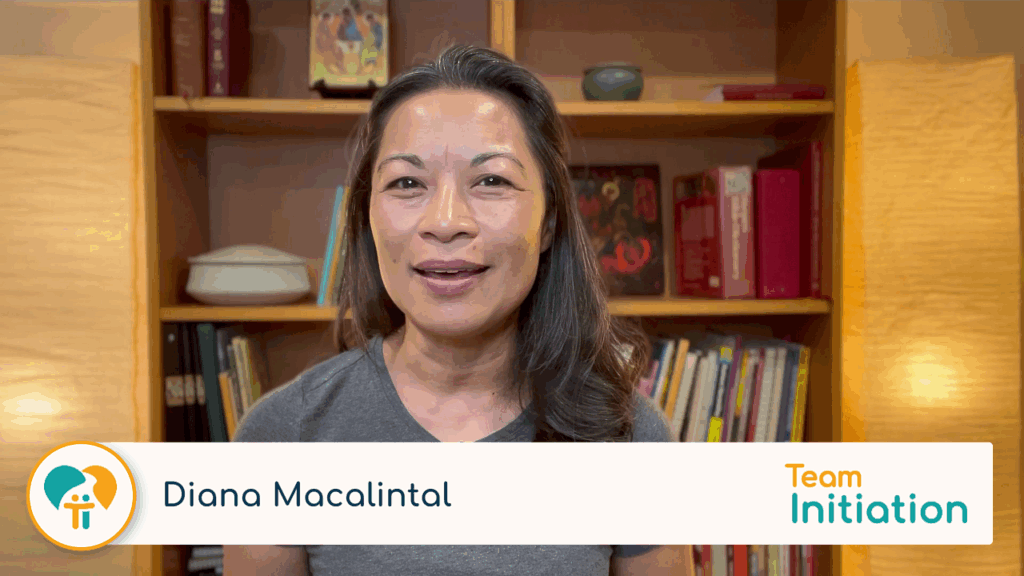![devotion1_xenia.JPG by xenia [MorgueFile] RCIA (Rite of Christian Initiation of Adults) image posted by TeamRCIA](https://teaminitiation.com/wp-content/uploads/2012/02/devotion1_xenia.JPG-by-xenia-MorgueFile-228x300.jpg) As we approach the beginning of Lent, it is a good time to think about how we teach the catechumens to pray. The best way, of course, is by example. So here is a list of suggestions for deepening our prayer lives this Lent.
As we approach the beginning of Lent, it is a good time to think about how we teach the catechumens to pray. The best way, of course, is by example. So here is a list of suggestions for deepening our prayer lives this Lent.
- Pray at a set time
-
-
- Make an appointment with yourself to pray every day at a set time.
-
- Create a prayer space
-
-
- Pray in the same place every day. Find a place that is free from distraction.
-
- Pray some version of the Liturgy of the Hours.
Here are three great resources, listed in order of their level of complexity:
- Pray the Sunday readings before going to Mass
-
-
- This is an important prayer practice to master. As catechumenate leaders, we have to prepare our hearts to hear the word.
-
- Keep a written list of people to pray for
-
-
- Include the names of all the catechumens and candidates on your list.
- Add at least one “enemy” to your prayer list
- Pray for the strength to attempt a reconciliation. Expect a miracle.
-
- Keep a written list of life goals to pray for
-
-
- Spend some significant time discerning your goals for the various areas of your life. Include spiritual, family, physical, financial, and vocational goals. Pray for God’s will in these areas of your life.
-
- Every Lent, try a different prayer form
For example, try one or more of these:
-
-
- Meditation
- Lectio divina
- Rosary
-
- Pray the Lord’s Prayer
-
-
- Attempt to imitate the practice of the early church; pray the Lord’s Prayer three times a day—in the morning, at noon, and in the evening. Try to do this every day of Lent.
-
- Use a mantra
-
-
- A prayer mantra is a short phrase that you can use as a focus for meditation or something to repeat silently as you sit at a traffic light or in a boring meeting. Here are some examples:
- Lord Jesus Christ, have mercy upon me, a sinner. (Orthodox Church, “Jesus Prayer”)
- Lord Jesus Christ, fill me with your Holy Spirit. (Modified Jesus Prayer)
- Maranatha. (Oldest Christian mantra; it means, “Come, Lord”)
- Glory be to God.
- My God and my all! (St. Francis of Assissi)
- Trust in the slow work of God. (Pierre Teilhard de Chardin)
- Serve the growing Christ. (Bede Griffiths)
- A prayer mantra is a short phrase that you can use as a focus for meditation or something to repeat silently as you sit at a traffic light or in a boring meeting. Here are some examples:
-
- Silence
-
-
- Spend some time in absolute silence. Start with just a minute and then gradually extend the time of your silent prayer.
-
- Centering Prayer
-
-
- Centering Prayer is a combination of silent prayer and using a prayer mantra. Click here for a brief video by Thomas Keating on how to enter into Centering Prayer.
-
- Blessings
-
-
- Use more blessings. The introduction to the Book of Blessings is an excellent guide for the use of blessings.
-
- Key scriptures
-
-
- Keep a list of key Scriptures that you find important for your life near your prayer list. Read one or two of these every day.
-
- Discernment
-
-
- Practice discerning God’s will in your life. There are a ton of resources on discernment. One of my favorites is The Discernment of Spirits: An Ignatian Guide for Everyday Living.
-
- You who do through
-
-
- Learn to pray in the “You who do thorough” style:
- You (address God with a divine name or title)
- who (recall a great work God had done)
- do (petition God to do a great work now)
- through (we always pray through Jesus Christ)
- Joe Paprocki has a great post on this.
- Learn to pray in the “You who do thorough” style:
-
- Pray when you’re distracted
-
-
- Don’t let our normal human condition keep you from praying. God knows you are busy. Pray anyway.
-
- Conclude with thanksgiving
-
- Always thank God for your situation right now. Even if you are in an absolutely terrible spot, there is some grace to be found. Find it it and offer thanks.
What best prayer practices would you add?

















